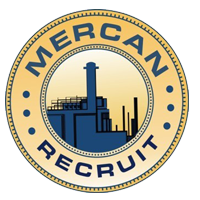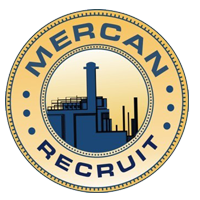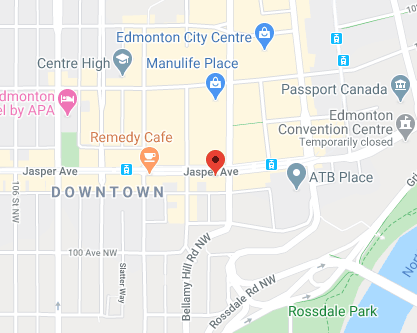Temporary Foreign Worker Program (TFWP) and International Mobility Program (IMP): Persons who may apply at a port of entry
Temporary Foreign Worker Program (TFWP) and International Mobility Program (IMP): Persons who may apply at a port of entry
Most foreign nationals must apply for a work permit from outside of Canada. A foreign national may apply for a work permit at any time before entering Canada as per section 197 of the Immigration and Refugee Protection Regulations (IRPR). As per ministerial instructions (MI) 62, all applications for a work permit submitted for foreign nationals who are outside Canada at the time of application must be submitted using electronic means—meaning they must apply online.
Some workers can apply at the time of their entry to Canada. When seeking to enter Canada, some foreign nationals may make an application for their work permit at the port of entry per subsection R198(1) if they
- are exempt from the requirement for a temporary resident visa (TRV) under section R190 and their job falls within the International Mobility Program (IMP) (that is, they are not required to obtain a labour market impact assessment [LMIA]),
- are exempt from the requirement for a TRV under section R190 and their job falls within the Temporary Foreign Worker Program (TFWP) (that is, they are required to obtain an LMIA), and a positive or neutral LMIA has been issued by the time they arrive,
- are a citizen or permanent resident of the United States (U.S.), Greenland or Saint-Pierre and Miquelon, regardless of whether their job falls within the TFWP or the IMP, or
- are seeking a work permit in a category whose applications are permitted at a port of entry (for example, live-in caregiver and seasonal agricultural worker are categories that don’t permit applicants to apply at a port of entry)
Note: In addition to the above, before they arrive, the foreign national must have passed their immigration medical examination (IME), if required, and provide the valid results.
The following persons can’ t apply on entry to Canada as per subsection R198(2) and certain ministerial instructions and program requirements :
- all persons applying for a post-graduation work permit (PGWP)
- all persons who are not exempt from the TRV requirement
- all persons who require an IME, whether TRV-required or visa-exempt, unless valid IME results are available at the time of entry
- international youth exchange program participants other than U S citizens or permanent residents (exemption code C21) (consult International Experience Canada)
- seasonal agricultural workers
- foreign nationals who are citizens of a country listed in the table under subsection R7.01(1), as they are not TRV-exempt as per section R190
The following persons can’t access certain immigration services at ports of entry
Effective December 24, 2024, the CBSA specified that, pursuant to its authority under section 26.1 of the IRPR and based on the factors set out in section 26 of the IRPR, it will no longer receive applications for work permits or study permits from foreign nationals who meet the definition of flagpoling.
For the purpose of the designation, flagpoling is defined as:
when foreign nationals who hold temporary resident status in Canada leave Canada and, after a visit to the United States or St. Pierre and Miquelon, re-enter for the purpose of obtaining immigration services at a port of entry, including work and study permits
Persons who hold a valid work permit or who wish to change their conditions or renew their work permit should apply in Canada, pursuant to section R199.
In-Canada applicants
The following persons with temporary in-Canada status remain eligible to apply for a work permit on entry to Canada [R198(1)] if they meet the requirements to do so:
- applicants who are citizens or permanent residents of the United States of America
- professionals and technicians under f ree trade agreements (FTAs), including
- professionals under the FTA with the United States of America and Mexico (T36)
- professionals under the FTA with Chile (F22)
- contractual service suppliers or independent professionals under the FTA with South Korea (F32)
- professionals under the FTA with Panama (F42)
- professionals or technicians under the FTA with Colombia (F12)
- professionals or technicians under the FTA with Peru (F52)
- spouses or common-law partners of applicants under FTAs with South Korea (F32), Panama (F42) and Colombia (F12)
- truck drivers who are actively working and required to depart Canada for the purpose of their employment and who, prior to their departure from Canada, held a work permit and had the authority to work under paragraph R186(u) as a result of a pending application for work permit renewal. This does not include truck drivers operating solely within Canada.
- applicants with pre-scheduled CBSA appointments
Applicants with a letter of introduction
Persons outside of Canada who apply for a work permit will receive a letter of introduction (LOI) if they have been preliminarily assessed to have met the requirements for issuance of the work permit. They must present this document at a port of entry, where a CBSA officer will decide whether to issue the work permit based on an assessment of whether the foreign national continues to meet the requirements for issuance pursuant to the IRPA and the IRPR. If a person inside of Canada has followed the instructions to apply from outside of Canada, they will also receive an LOI, but they will be unable to receive their work permit at a port of entry if they are attempting re-entry from the US or St. Pierre and Miquelon unless they meet one of the stated exemptions.
Applicants with expired work permits
Persons whose work permits expire while they are outside of Canada may apply at the port of entry if they are eligible pursuant to section R198. They must provide the officer at a port of entry with sufficient documentation to satisfy the officer that the client meets the requirements for the category to which they are applying.
Note: Although foreign nationals who are exempt from the requirement of a TRV may apply for a work permit at a port of entry, most foreign nationals travelling to Canada by air will need to apply for and obtain an eTA before boarding their flight to Canada.



 Email
Email